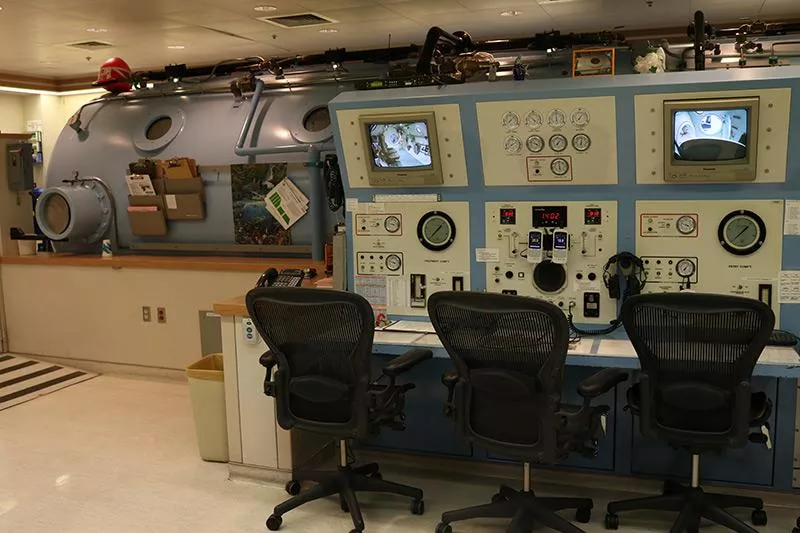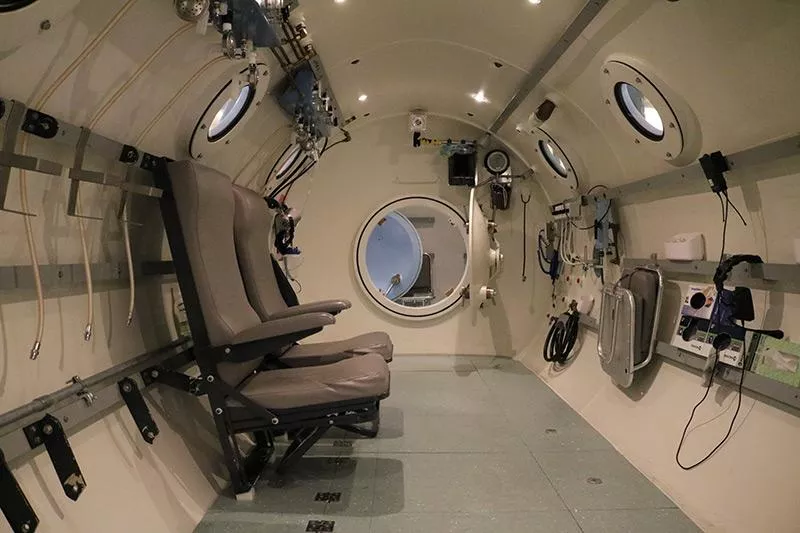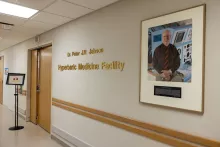Hyperbaric Medicine Facility


Our team includes specially trained physicians, respiratory therapists, biomedical personnel, and other technical support staff. They have additional training in critical care treatment, advanced life support, and diving and decompression medicine.
The University of Iowa has been using hyperbaric oxygen therapy since 1988 and currently operates the largest hyperbaric chamber in the state. Compressed Air Therapy and Compressed Oxygen are used either as primary treatment or as a supplement to other forms of treatment such as surgery or antibiotics. The treatments offered from the UI Hyperbaric Medicine Facility have been proven effective for a number of medical and surgical conditions.
There are 15 indications (illnesses, injuries, conditions) that are approved to be treated by the Hyperbaric Oxygen Therapy Committee
Severe burns that can be treated with enhanced oxygen
When gas bubbles enter arteries or veins
Wounds that are not healing properly
Carbon monoxide is inhaled and injuries arise from that
A rapidly progressive infection of the soft tissue, commonly known as "gas gangrene"
A skin graft does not heal properly
Injuries that result from trauma ranging from minor contusions to limb threatening damage
Referred to as the "bends." Formation of inert gas bubbles in tissue usually caused by rapid ascent from a dive
Some radiation treatments leave patients with cell damage to soft tissue (such as mouth, throat, and the gastrointestinal tract)
Hearing loss caused by a malfunction in a certain nerve in the brain
An inflammation caused from infected material coming from local or remote infectious sources
Rare but severe type of bacterial infection that can cause tissue death
Infection of bone or bone marrow
Loss of red blood cell mass due to aplasia, hemolysis, or hemorrhage
Weaking and progressive destruction of bone
Our Care Team

- Anesthesia
- Emergency Medicine

- Anesthesia
- Emergency Medicine

- Anesthesia

- Anesthesia
- Neurology
- Surgery
- Transplant

- Jodie Harmon, RRT
- Anna Weikamp, PA-C, ARNP Hospitalist
- Caroline McMahon, PA-C, ARNP Hospitalist
- Ian Gordon, PA-C, ARNP Hospitalist
Not sure which Hyperbaric Medicine Facility provider is right for you?
Locations and Offices








